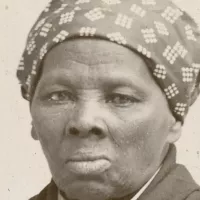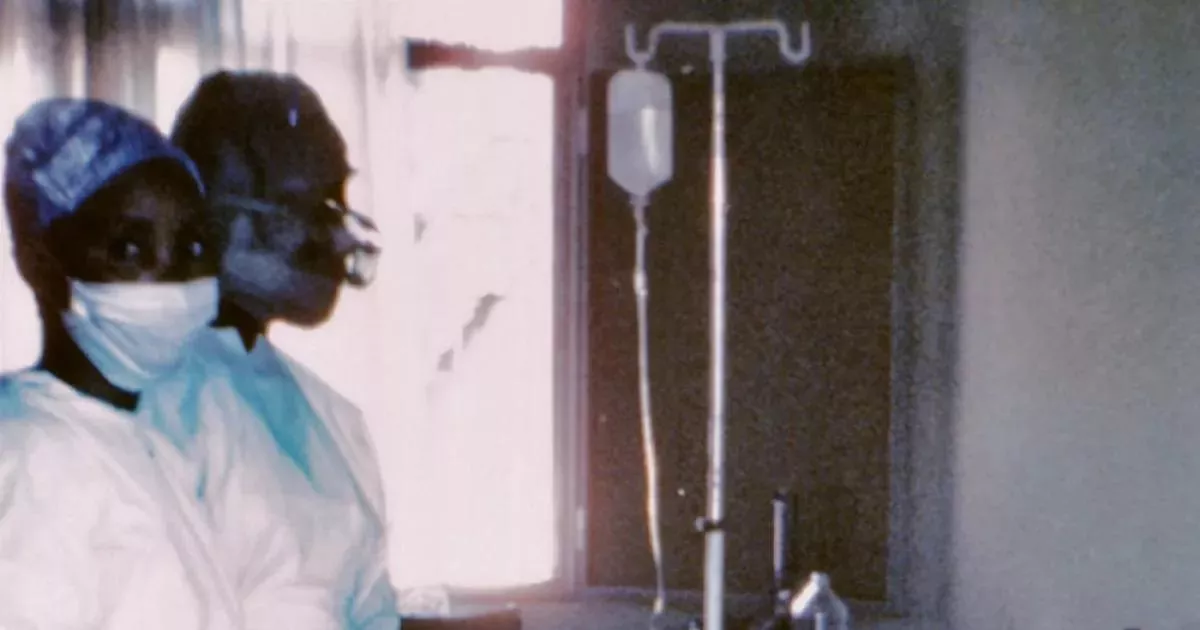Ebola, or Ebola virus disease (EVD), is a severe viral hemorrhagic fever affecting humans and primates. Symptoms appear 2-21 days post-infection, starting with fever, sore throat, muscle pain, and headaches, progressing to vomiting, diarrhea, rash, and organ dysfunction. Internal and external bleeding can occur. The fatality rate averages around 50%, with death often resulting from shock due to fluid loss, typically 6-16 days after symptom onset. Early treatment significantly improves survival rates. A vaccine was approved by the US FDA in December 2019.
1975: Bats implicated in Marburg virus infections
In 1975, bats were implicated in Marburg virus infections, further highlighting the potential role of bats in the transmission of viral diseases.
August 1976: Second EVD Outbreak Begins in Zaire
On August 26, 1976, the second outbreak of EVD began in Yambuku, Zaire (now the Democratic Republic of the Congo), caused by EBOV. On August 26, 1976 the first person infected was headmaster Mabalo Lokela, who displayed symptoms after visiting the Ebola River between August 12 and 22. He died on September 8.
November 1976: First Known EVD Outbreak Identified
Between June and November 1976, the first known outbreak of Ebola Virus Disease (EVD) was identified in Nzara, South Sudan, caused by the Sudan virus (SUDV). The November 1976 Sudan outbreak infected 284 people and resulted in 151 deaths.
1976: Start of sampling of mammals, birds, reptiles, amphibians and arthropods for Ebola virus
Between 1976 and 1998, a sampling of mammals, birds, reptiles, amphibians and arthropods began from regions of Ebola virus outbreaks.
1976: Ebola first identified
Ebola was first identified in 1976, marking the beginning of understanding and combating the disease.
1976: First Identification of Ebola
In 1976, Ebola was first identified in two simultaneous outbreaks in Nzara (South Sudan) and Yambuku (Democratic Republic of the Congo), marking the initial recognition of the disease.
1976: Bats roosting in factory linked to Ebola outbreak
In 1976, bats were known to roost in the cotton factory in which the first cases of Ebola outbreaks were observed, suggesting a potential link between bats and the spread of the virus.
1976: Virus Discovery
On 1 June 2020, the Congolese health ministry announced a new DRC outbreak of Ebola in Mbandaka, Équateur Province, a region along the Congo River. Genome sequencing suggests that this outbreak, the 11th outbreak since the virus was first discovered in the country in 1976, is unrelated to the one in North Kivu Province or the previous outbreak in the same area in 2018.
1976: Reactions to the 1976 Ebola outbreak in Zaire
William Close's books, "Ebola: A Documentary Novel of Its First Explosion" published in 1995 and "Ebola: Through the Eyes of the People" published in 2002, focused on individuals' reactions to the 1976 Ebola outbreak in Zaire.
1979: Bats roosting in factory linked to Ebola outbreak
In 1979, bats were known to roost in the cotton factory in which the first cases of Ebola outbreaks were observed, suggesting a potential link between bats and the spread of the virus.
1980: Bats implicated in Marburg virus infections
In 1980, bats were implicated in Marburg virus infections, further highlighting the potential role of bats in the transmission of viral diseases.
1989: Outbreak of Fatal Illness in Lab Monkeys
In late 1989, an outbreak of fatal illness occurred amongst lab monkeys at Hazelton Research Products' Reston Quarantine Unit in Reston, Virginia. The tissue samples were sent from dead animals to the United States Army Medical Research Institute of Infectious Diseases (USAMRIID) at Fort Detrick, Maryland, where an ELISA test indicated the antibodies present in the tissue were a response to Ebola virus and not SHFV.
1994: First Ebola Case in Cote d’Ivoire Since 1994
On 14 August 2021, The Ministry of Health of Cote d’Ivoire confirmed the country's first case of Ebola since 1994.
1995: Publication of "The Hot Zone" by Richard Preston
In 1995, Richard Preston's best-selling book, "The Hot Zone", dramatised the Ebola outbreak in Reston, Virginia.
1995: Publication of William Close's Ebola Novel
In 1995, William Close's "Ebola: A Documentary Novel of Its First Explosion" focused on individuals' reactions to the 1976 Ebola outbreak in Zaire.
1995: Second Major Outbreak in Zaire
In 1995, the second major outbreak of Ebola occurred in Zaire (now the Democratic Republic of the Congo), affecting 315 people and resulting in 254 deaths. The 1995 outbreak highlighted the severity and impact of the disease.
1996: Publication of Tom Clancy's "Executive Orders"
In 1996, Tom Clancy's novel, "Executive Orders", involves a Middle Eastern terrorist attack on the United States using an airborne form of a deadly Ebola virus strain named "Ebola Mayinga".
1998: Results of sampling of mammals, birds, reptiles, amphibians and arthropods for Ebola virus
Between 1976 and 1998, in 30,000 mammals, birds, reptiles, amphibians and arthropods sampled from regions of Ebola virus outbreaks, no Ebola virus was detected apart from some genetic traces found in six rodents and one shrew.
2001: Traces of EBOV detected in carcasses of gorillas and chimpanzees
In 2001, traces of EBOV were detected in the carcasses of gorillas and chimpanzees during outbreaks, which later became the source of human infections.
2001: Bleeding into the gastrointestinal tract incidence reported in Gabon outbreak
In the 2001 Ebola outbreak in Gabon, the incidence of bleeding into the gastrointestinal tract was reported to be ~58%.
2002: Publication of "Ebola: Through the Eyes of the People"
In 2002, William Close's "Ebola: Through the Eyes of the People" focused on individuals' reactions to the 1976 Ebola outbreak in Zaire.
2002: Highest risk of death during Republic of the Congo outbreak
In 2002–2003, the Ebola outbreak in the Republic of the Congo had the highest risk of death at 90%.
2002: Survey finds immunoglobulin G in bats indicating Ebola infection
In a 2002-2003 survey of animals from Gabon and the Republic of the Congo, immunoglobulin G (IgG) immune defense molecules indicative of Ebola infection were found in three bat species, suggesting the presence of Ebola in these bat populations.
2002: Decline in Chimpanzee Populations in Lossi Sanctuary
Outbreaks of Ebola may have been responsible for an 88% decline in tracking indices of observed chimpanzee populations in the 420 km Lossi Sanctuary between 2002 and 2003.
2003: Highest risk of death during Republic of the Congo outbreak
In 2002–2003, the Ebola outbreak in the Republic of the Congo had the highest risk of death at 90%.
2003: Ebola Outbreak in DRC
In 2003, an Ebola outbreak in the Democratic Republic of the Congo (DRC) infected 143 people and caused 128 deaths, resulting in a 90% death rate. As of 2003, this was the highest death rate recorded for any outbreak of the genus Ebolavirus.
2003: Traces of EBOV detected in carcasses of gorillas and chimpanzees
In 2003, traces of EBOV were detected in the carcasses of gorillas and chimpanzees during outbreaks, which later became the source of human infections.
2003: Survey finds immunoglobulin G in bats indicating Ebola infection
In a 2002-2003 survey of animals from Gabon and the Republic of the Congo, immunoglobulin G (IgG) immune defense molecules indicative of Ebola infection were found in three bat species, suggesting the presence of Ebola in these bat populations.
2003: Decline in Chimpanzee Populations in Lossi Sanctuary
Outbreaks of Ebola may have been responsible for an 88% decline in tracking indices of observed chimpanzee populations in the 420 km Lossi Sanctuary between 2002 and 2003.
2003: Monitoring of animal outbreaks to predict and prevent Ebola
Since 2003, outbreaks of Ebola disease in wild animals used for consumption have been monitored to predict and prevent Ebola outbreaks in humans, indicating efforts towards proactive prevention.
2004: Russian Scientist Dies from Ebola Infection
In 2004, a Russian scientist died from Ebola after accidentally sticking herself with a needle infected with the virus. The 2004 incident underscores the risks associated with handling the Ebola virus in laboratory settings.
2005: Seroprevalence of EBOV in Dogs During Outbreak
A 2005 survey of dogs during an EBOV outbreak found that although they remain asymptomatic, about 32 percent of dogs closest to an outbreak showed a seroprevalence for EBOV versus nine percent of those farther away. The authors concluded that there were "potential implications for preventing and controlling human outbreaks."
August 2007: Ebola Cases Confirmed in DRC Fever Epidemic
Between April and August 2007, a fever epidemic in a four-village region of the DRC was confirmed in September as cases of Ebola. The August 2007 outbreak eventually infected 264 individuals and killed 187.
November 2007: Ebola Outbreak Confirmed in Uganda
On November 30, 2007, the Uganda Ministry of Health confirmed an outbreak of Ebola in the Bundibugyo District in Western Uganda. As of November 2007, the WHO confirmed the presence of a new species of genus Ebolavirus, tentatively named Bundibugyo. 149 cases were reported with 37 deaths.
August 2012: Ebola-Bundibugyo Outbreak in DRC
On August 17, 2012, the Ministry of Health of the DRC reported an outbreak of the Ebola-Bundibugyo variant in the eastern region. As of August 2012, the WHO revealed that the virus had sickened 57 people and killed 29.
2012: WHO reports on Ebola Outbreaks between 1976 and 2012
According to the World Health Organization, between 1976 and 2012, there were 24 outbreaks of Ebola resulting in a total of 2,387 cases, and 1,590 deaths.
2012: Virus Transmission Demonstrated Between Pigs and Primates
In 2012, it was demonstrated that the Ebola virus can travel without contact from pigs to nonhuman primates, although the same study failed to achieve transmission in that manner between primates.
December 2013: Start of West Africa Ebola Epidemic
In December 2013, the largest Ebola outbreak to date began as an epidemic in West Africa, leading to widespread cases and fatalities.
December 2013: Outbreak Traced to First Case
Researchers traced the outbreak to a one-year-old child who died in December 2013.
2013: Bats identified as the most likely candidate for the natural reservoir of Ebola
As of 2013, bats were considered to be the most likely candidate for the natural reservoir of Ebola, but it was unknown whether other animals were involved in its spread.
2013: Candidate Treatments Available by 2013
By the time the Ebola virus epidemic in West Africa began in 2013, there were at least nine different candidate treatments available.
2013: WHO reports cumulative Ebola cases and fatalities through 2013
From 1976 through 2013, the World Health Organization (WHO) reported 2,387 confirmed cases of Ebola with 1,590 overall fatalities.
March 2014: Major Ebola Outbreak Reported in Guinea
In March 2014, the World Health Organization (WHO) reported a major Ebola outbreak in Guinea. The March 2014 outbreak rapidly spread to Liberia and Sierra Leone and was the largest Ebola outbreak ever documented, and the first recorded in the region.
May 2014: Lowest Weekly Case Total Since May
On 8 April 2015, the WHO reported only 30 confirmed cases, the lowest weekly total since the third week of May 2014.
June 2014: Fewer than 100 New Cases Reported
On 28 January 2015, the WHO reported that for the first time since the week ending 29 June 2014, there had been fewer than 100 new confirmed cases reported in a week in the three most-affected countries.
August 2014: WHO considers travel bans to be not useful in decreasing spread of disease
As of August 2014, the WHO does not consider travel bans to be useful in decreasing the spread of Ebola, influencing public health strategies.
August 2014: Ebola Outbreak in DRC
In August 2014, an outbreak of the Ebola virus occurred in the Democratic Republic of Congo (DRC). Genome-sequencing showed that the August 2014 outbreak was the same EBOV species, the Zaire species.
August 2014: High Mortality Rate Among Healthcare Workers
In August 2014, the WHO reported that 10% of the dead were healthcare workers. The high mortality rate during August 2014, was attributed to their close contact with the body fluids of infected patients.
August 2014: WHO Declares Ebola Epidemic an International Emergency
On August 8, 2014, the WHO declared the Ebola epidemic an international public health emergency. By mid-August 2014, Doctors Without Borders reported the situation in Liberia's capital, Monrovia, was "catastrophic" and "deteriorating daily".
September 2014: Average risk of death from Ebola at 50% as of September 2014
As of September 2014, the average risk of death among those infected with Ebola is 50%.
September 2014: Insufficient Capacity for Treating Ebola Patients
In September 2014, it was estimated that the countries' capacity for treating Ebola patients was insufficient by the equivalent of 2,122 beds.
October 2014: CDC defines risk levels for monitoring Ebola symptoms
In October 2014, the CDC defined four risk levels used to determine the level of 21-day monitoring for symptoms and restrictions on public activities, providing a framework for managing potential Ebola cases.
November 2014: New 15-Minute Ebola Test Reported
On 29 November 2014, a new 15-minute Ebola test was reported that if successful, "not only gives patients a better chance of survival, but it prevents transmission of the virus to other people." The new equipment, about the size of a laptop and solar-powered, allows testing to be done in remote areas.
December 2014: Technician Exposed to Ebola in Atlanta Laboratory
On 24 December 2014, a laboratory in Atlanta, Georgia reported that a technician had been exposed to Ebola. The exposure incident in December 2014, prompted safety reviews at the facility.
December 2014: British Nurse Diagnosed with Ebola After Returning from Sierra Leone
On 29 December 2014, Pauline Cafferkey, a British nurse who had just returned to Glasgow from Sierra Leone, was diagnosed with Ebola at Glasgow's Gartnavel General Hospital. After initial treatment in Glasgow in December 2014, she was transferred to the Royal Free Hospital in London for longer-term treatment.
December 2014: FDA Approves LightMix Ebola Zaire rRT-PCR Test
On 29 December 2014, the U.S. Food and Drug Administration (FDA) approved the LightMix Ebola Zaire rRT-PCR test for patients with symptoms of Ebola.
2014: Emergence of Misleading Ebola Information in Books
As the Ebola virus epidemic in West Africa developed in 2014, numerous self-published books with sensational and misleading information about the disease appeared, contributing to its spread. The World Health Organization and the United Nations stated that such misinformation had contributed to the spread of the disease.
2014: Ebola vaccine studied in Guinea
Between 2014 and 2016, the rVSV-ZEBOV Ebola vaccine was studied in Guinea.
2014: High percentage of Ebola infections contracted through burial rituals in Guinea
During the 2014 Ebola outbreak in Guinea, 69% of Ebola infections are believed to have been contracted via unprotected contact with infected corpses during certain Guinean burial rituals, highlighting risks associated with handling human remains.
2014: Kits for home treatment distributed during 2014 outbreak
During the 2014 Ebola outbreak, kits were put together to help families treat Ebola disease in their homes. These kits included protective clothing, chlorine powder, and other cleaning supplies to facilitate barrier-separation.
2014: Lower incidence of gastrointestinal bleeding in US outbreak
During the 2014-2015 Ebola outbreak in the US, the incidence of bleeding into the gastrointestinal tract was ~18%, which was lower than in the 2001 Gabon outbreak.
2014: Misuse of Ebola Information to Spread Malware
In 2014, fake emails pretending to be Ebola information from the WHO or the Mexican government have been misused to spread computer malware.
2014: Mobile testing facilities deployed in Liberia
In 2014, new mobile testing facilities were deployed in parts of Liberia, allowing test results to be obtained 3–5 hours after sample submission, improving rapid diagnostics.
2014: Ebola virus found in patient's eye two months after clearing from blood
In 2014, the Ebola virus was found in the eye of one patient two months after it was cleared from his blood, indicating potential long-term presence in certain body parts.
2014: CDC recommends medical personnel training for PPE
In 2014, the U.S. Centers for Disease Control (CDC) began recommending that medical personnel receive training on the proper suit-up and removal of personal protective equipment (PPE), highlighting the importance of safety protocols.
2014: Trials of Ebola Treatments Conducted
Several trials of Ebola treatments were conducted in late 2014 and early 2015, but some were abandoned due to lack of efficacy or lack of people to study.
January 2015: Fewer Than 100 New Cases Reported
On 28 January 2015, the WHO reported that for the first time since the week ending 29 June 2014, there had been fewer than 100 new confirmed cases reported in a week in the three most-affected countries. After January 2015, the response to the epidemic then moved to a second phase, as the focus shifted from slowing transmission to ending the epidemic.
April 2015: Lowest Weekly Case Total Since May 2014
On 8 April 2015, the WHO reported only 30 confirmed cases, the lowest weekly total since the third week of May 2014.
July 2015: Lack of Proven Medication for Treating Ebola
As of July 2015, no medication had been proven safe and effective for treating Ebola.
October 2015: Case of meningitis-like condition reported months after recovery
As of October 2015, one case of a condition similar to meningitis has been reported many months after recovery from Ebola.
December 2015: Guinea Declared Free of Ebola Transmission
On 29 December 2015, 42 days after the last person tested negative for a second time, Guinea was declared free of Ebola transmission. In December 2015, a 90-day period of heightened surveillance was announced.
2015: Rapid antigen test approved for use by WHO
In 2015, a rapid antigen test which gives results in 15 minutes was approved for use by the World Health Organization (WHO). It is able to confirm Ebola in 92% of those affected and rule it out in 85% of those not affected, providing a quick and effective diagnostic tool.
2015: Suggestion of Ebola as a Biological Weapon
The BBC reported in 2015 that "North Korean state media has suggested the disease was created by the U.S. military as a biological weapon."
January 2016: End of West Africa Ebola Epidemic
In January 2016, the Ebola epidemic in West Africa, which began in December 2013, concluded, marking the end of the largest outbreak to date.
January 2016: New Ebola Case Detected in Sierra Leone
On 14 January 2016, a new case was detected in Sierra Leone. The detection of the new case in January 2016, occurred after Guinea had been declared free of Ebola transmission.
March 2016: Ebola Outbreak Declared No Longer an Emergency
On 29 March 2016, the Ebola outbreak was declared no longer an emergency. The declaration in March 2016, was made after a new case had been detected in Sierra Leone in January.
May 2016: Suspected Cases and Deaths Reported
As of 8 May 2016, 28,646 suspected cases and 11,323 deaths were reported. It was suggested that these numbers may have been underestimated.
2016: Ebola vaccine studied in Guinea
Between 2014 and 2016, the rVSV-ZEBOV Ebola vaccine was studied in Guinea.
May 2017: Outbreak in Democratic Republic of the Congo
In May 2017, an Ebola outbreak began in the Democratic Republic of the Congo, highlighting the continued presence of the disease in the region.
May 2017: DRC Notifies WHO About Ebola Outbreak
On 11 May 2017, the DRC Ministry of Public Health notified the WHO about an outbreak of Ebola. In May 2017, a total of 583 contacts were monitored.
July 2017: WHO Declares End of Ebola Outbreak in DRC
On 2 July 2017, the WHO declared the end of the Ebola outbreak. The July 2017 declaration marked the end of the outbreak where four people died, and four people survived.
May 2018: WHO Reports Suspected Ebola Cases in DRC
On 14 May 2018, the World Health Organization reported that "the Democratic Republic of Congo reported 39 suspected, probable or confirmed cases of Ebola between 4 April and 13 May, including 19 deaths." In May 2018, an experimental vaccine was approved for use, and WHO Director-General Tedros Adhanom Ghebreyesus visited Bikoro.
July 2018: DRC Ebola Outbreak Declared Over
The 2018 outbreak in the DRC was declared over on 24 July 2018. This July 2018 declaration marked the end of the outbreak centered on the Bikoro, Iboko, and Wangata areas in Equateur province.
August 2018: Ebola Outbreak Declared in North Kivu, DRC
On 1 August 2018, the world's 10th Ebola outbreak was declared in North Kivu province of the Democratic Republic of the Congo. The August 2018 outbreak was the first Ebola outbreak in a military conflict zone.
November 2018: Nearly 200 Congolese Died of Ebola
By November 2018, nearly 200 Congolese had died of Ebola, about half of them from the city of Beni, where armed groups are fighting over the region's mineral wealth, impeding medical relief efforts.
2018: Vaccination campaign during the Kivu Ebola epidemic
From 2018 to 2020, approximately 345,000 people were given the Ebola vaccine during the Kivu Ebola epidemic.
2018: Ebola Outbreak in the Democratic Republic of the Congo
In 2018, another Ebola outbreak began in the Democratic Republic of the Congo, indicating the ongoing challenge of controlling the virus.
2018: Outbreak Unrelated to Previous
On 1 June 2020, the Congolese health ministry announced a new DRC outbreak of Ebola in Mbandaka, Équateur Province, a region along the Congo River. Genome sequencing suggests that this outbreak, the 11th outbreak since the virus was first discovered in the country in 1976, is unrelated to the one in North Kivu Province or the previous outbreak in the same area in 2018.
March 2019: Ebola Outbreak Becomes Second Largest Ever Recorded
By March 2019, the Ebola outbreak in the DRC became the second largest Ebola outbreak ever recorded, with more than 1,000 cases. By March 2019, insecurity continued to be the major resistance to providing an adequate response.
June 2019: Ebola Spreads to Uganda
In June 2019, two people died of Ebola in neighboring Uganda. The June 2019 deaths marked the spread of the outbreak beyond the Democratic Republic of Congo.
June 2019: Ebola Cases and Deaths Reported
As of 4 June 2019, the WHO reported 2025 confirmed and probable cases with 1357 deaths.
July 2019: WHO Declares Ebola Outbreak a Global Health Emergency
In July 2019, an infected man traveled to Goma, home to more than two million people. One week later, on 17 July 2019, the WHO declared the Ebola outbreak a global health emergency. A government spokesman said that half of the Ebola cases are unidentified, and he added that the current outbreak could last up to three years.
August 2019: Experimental Treatments Found Effective
As of August 2019, two experimental treatments known as atoltivimab/maftivimab/odesivimab and ansuvimab were found to be 90% effective against Ebola.
December 2019: Ebola vaccine approved in the United States
In December 2019, an Ebola vaccine, rVSV-ZEBOV, was approved in the United States. This vaccine appears to be fully effective ten days after being administered.
December 2019: Ebola vaccine approved by US FDA
In December 2019, the US FDA approved an Ebola vaccine. This marks a significant milestone in the fight against the disease, offering a preventive measure against infection.
2019: Two treatments associated with improved outcomes as of 2019
As of 2019 two treatments (atoltivimab/maftivimab/odesivimab and ansuvimab) are associated with improved outcomes. The FDA warns about unverified claims of benefits from anti-Ebola products
June 2020: New Ebola Outbreak in DRC
On 1 June 2020, the Congolese health ministry announced a new DRC outbreak of Ebola in Mbandaka, Équateur Province. By 15 June 2020, the case count had increased to 17 with 11 deaths, with more than 2,500 people having been vaccinated.
June 2020: Second Biggest EVD Outbreak Declared Over
On 25 June 2020, the second biggest EVD outbreak ever was declared over. The second biggest EVD outbreak caused a lot of damage worldwide.
October 2020: Aoltivimab/maftivimab/odesivimab (Inmazeb) approved for medical use in the United States
In October 2020, atoltivimab/maftivimab/odesivimab (Inmazeb) was approved for medical use in the United States to treat the disease caused by Zaire ebolavirus, indicating advancements in treatment options.
October 2020: FDA approves atoltivimab/maftivimab/odesivimab for Zaire ebolavirus treatment
In October 2020, the U.S. Food and Drug Administration (FDA) approved atoltivimab/maftivimab/odesivimab for the treatment of infection caused by Zaire ebolavirus.
November 2020: 11th EVD Outbreak Declared Over
The 11th EVD outbreak was officially declared over on 19 November 2020. By the time the Équateur outbreak ended in November 2020, it had 130 confirmed cases with 75 recoveries and 55 deaths.
2020: Vaccination campaign during the Kivu Ebola epidemic
From 2018 to 2020, approximately 345,000 people were given the Ebola vaccine during the Kivu Ebola epidemic.
February 2021: Ebola Deaths and Positive Cases in Guinea
In February 2021, Guinea's national health agency confirmed three Ebola deaths and five positive cases in the south-eastern region, leading to further testing, tracing, and isolation efforts. The Guinean government declared an Ebola epidemic on 14 February.
February 2021: Ebola Cases and Contacts Increase
In February 2021, a woman who had contact with a previous Ebola case died, leading to 100 traced contacts. Shortly after, a third case was detected in Butembo.
February 2021: New Ebola Case Detected in North Kivu
On 7 February 2021, the Congolese health ministry announced a new case of Ebola near Butembo, North Kivu detected a day before. The case was a 42-year-old woman who had symptoms of Ebola in Biena on 1 February 2021, and died in a hospital in Butembo a few days later.
April 2021: No New Cases or Deaths Reported
As of 4 May 2021, 23 cases of Ebola were reported, with no new cases or deaths since 3 April 2021 in Guinea. The outbreak may have started following reactivation of a latent case in a survivor of an earlier outbreak.
May 2021: 42-day Countdown Started for Declaring End of Outbreak
As of 4 May 2021, 23 cases of Ebola were reported in Guinea, with no new cases or deaths since 3 April 2021. A 42-day countdown period was started on 8 May 2021, to determine whether the outbreak was truly over.
May 2021: Declaration of the End of the 12th EVD Outbreak
In May 2021, the 12th EVD outbreak was declared over, after resulting in 12 cases and six deaths. Heightened surveillance will continue for 90 days after the declaration, in case of resurgence.
August 2021: First Ebola Case in Cote d’Ivoire Since 1994
On 14 August 2021, the Ministry of Health of Cote d’Ivoire confirmed the country's first case of Ebola since 1994. The Ebola Virus Disease was confirmed in samples collected from a patient hospitalized in Abidjan after arriving from Guinea.
August 2021: WHO Finds Patient Did Not Have Ebola
On 31 August 2021, the WHO found that, after further tests in a laboratory in Lyon, a patient in Cote d'Ivoire did not have Ebola. The cause of her disease is still being analyzed.
April 2022: Ebola Case Confirmed in DRC
On 23 April 2022, a case of Ebola was confirmed in the DRC in the Equateur province. The case was a 31-year-old man whose symptoms began on 5 April, but did not seek treatment for over a week. He died on 21 April.
May 2022: Recorded Deaths in DRC
By 24 May 2022, there were 5 recorded deaths due to Ebola in the DRC.
July 2022: End of the Outbreak Declaration
On 15 August, the fifth case was buried, and the outbreak was declared over, 42 days after, on 4 July 2022.
November 2022: Continued Outbreak in Uganda Without Vaccine
In November 2022, the Ebola outbreak in Uganda continued, with no vaccine available.
2022: Lighter PPE and remote monitoring available in Uganda
In 2022 in Uganda, lighter personal protection equipment has become available as well as possibilities to monitor and communicate with patients from windows in the treatment tents until it is necessary to enter if e.g. a patient's oxygen levels drop, marking advancements in treatment methods.
January 2023: End of Outbreak in Uganda
On 10 January 2023, the Ebola outbreak in Uganda was considered over after no new cases had been reported for 42 days. Nearly 80 people died in the outbreak.
2025: Reported Cases and Deaths
As of 4 June 2019, the WHO reported 2025 confirmed and probable cases with 1357 deaths.
Mentioned in this timeline
The United States of America is a federal republic located...
Sudan officially the Republic of the Sudan is a country...

A laptop or notebook computer is a small and portable...
Africa is the second-largest and second-most populous continent comprising of...
Virginia officially the Commonwealth of Virginia is a state located...

The World Health Organization WHO is a specialized agency of...
Trending
8 days ago Google's AI Comeback: Benioff Switches to Gemini 3, OpenAI Feels the Pressure.

2 months ago Miles Teller Returns to Host SNL; Nikki Glaser & Glen Powell Debut

Damini Ebunoluwa Ogulu known as Burna Boy is a Nigerian singer songwriter and record producer He achieved fame in with...

2 days ago Caitlin Clark's soaring earnings: $114K WNBA salary, $16M sponsors despite injury in 2025.

6 months ago Ken Burns' documentary aims to unite US; Filmmakers emulate Burns' style.

7 months ago Kenan Thompson Addresses Constant Confusion With Kel Mitchell, Good Sport About Fan Mix-Ups
Popular
Matt and Ross Duffer known as the Duffer Brothers are...
Aftyn Alyssa Behn is an American politician currently serving as...

Candace Owens is an American conservative political commentator and author...

XXXTentacion born Jahseh Dwayne Ricardo Onfroy was a controversial yet...

Ilhan Omar is an American politician currently serving as the...

Harriet Tubman was a pivotal American abolitionist and social activist...



